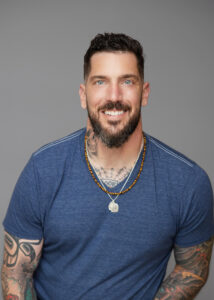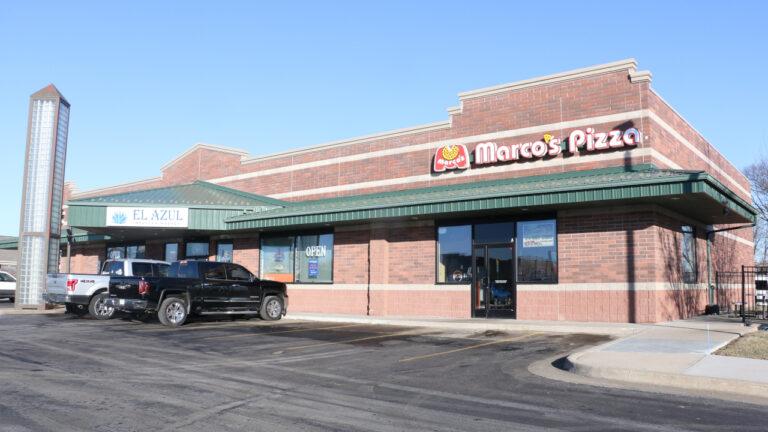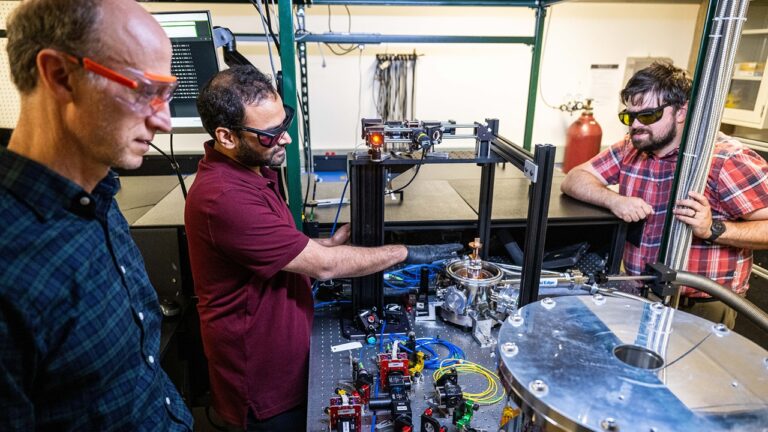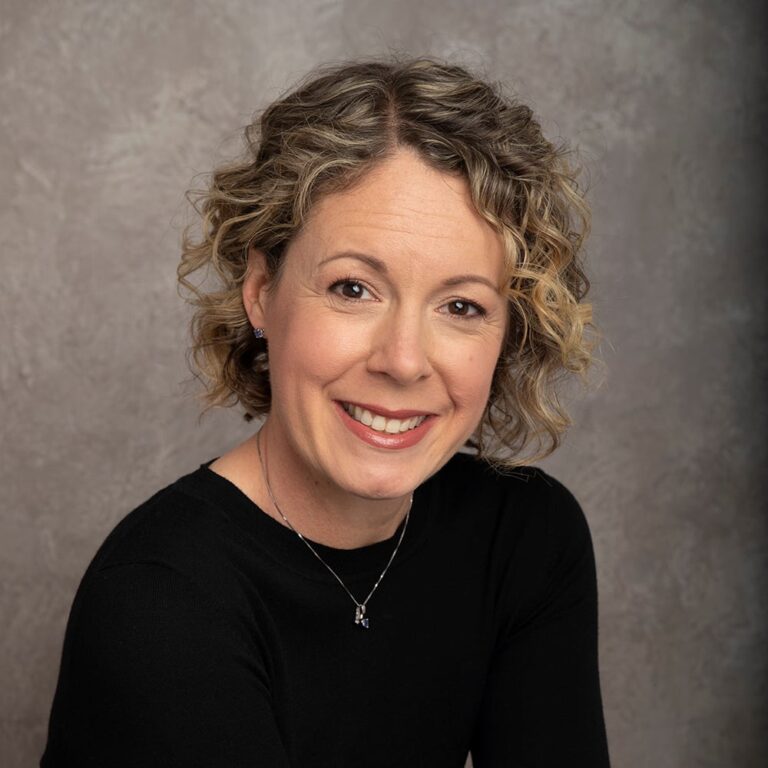
Robert Gallery is a former professional football player in the NFL and teammate of mine from our days at the University of Iowa together who now serves as the co-founder and CEO of Athletes for Care, a nonprofit organization supporting research and advocacy for athlete mental health.
Robert begins by looking back on his time at Iowa with me, including how he was raised with a sports mentality, how he approached football while in school, and when he realized this could be his career. We then dig into his time in the NFL and the consequences that years of playing had on his brain, how he found healing in the form of psychedelic therapy, and how he has now formed a nonprofit that works to help other athletes who struggle with similar issues post-career.
I learned a lot and I think you will too.
Sponsored by MidWestOne Bank, this is the latest edition of the CBJ’s Real Success with Nate Kaeding and notable Iowa business and cultural leaders.
Real Success with Nate Kaeding was named Best Business Podcast at the 2024 Iowa Podcast Awards.
Nate Kaeding: Robert, thanks a lot for taking the time. We’re right in the middle of old training camp times. I do not miss the middle of August, from either college or the NFL, and I was just a kicker. I just sat there and watched you guys do all the work. Are you thinking back to those days now?
Robert Gallery: People ask if I miss it. Right now? Absolutely not. I miss football, but I definitely do not miss training camps, especially the ones we went through. It’s a lot different now, but still, training camp is training camp. When we were going through, it was two-a-days, every day.
You and I were drafted in 2004. Marty Schottenheimer was my coach out in San Diego, and he was old school. We actually were still doing real two-a-days. My son and I are watching Hard Knocks, and it’s crazy how much it’s changed.
Robert: Yeah, it is crazy. We had so many coaching turnovers and new systems every year. It seemed like every year it was two-a-days. Looking back, I don’t know if I could get through that now.
We’ll go down memory lane a little bit, but the meat of the conversation today is about Athletes for Care, the nonprofit you’ve started to assist athletes struggling with brain injury, trauma, depression and anxiety. We’ll also talk about that transition when you shed the identity of a professional football player and moved on to your second act. A lot of people go through big life and career changes, and professional athletes are public and extreme examples. We’ll talk about your journey, your own struggles, and the impact you’ve had by sharing your story.
Just as context, you and I were teammates for my whole four years at Iowa. Go back to your early high school days at East Buck. Talk about your upbringing in sports and how that shaped you.
Robert: Everything was so simple and fun back then. I was lucky to grow up with a great, very athletic family. I have three brothers and a sister who all played college athletics. For me, it was kind of expected. I wanted to do what my siblings did. I was a multi-sport athlete — basketball, track, football. I look back and that’s what I want for my kids. There was no social media and there was barely internet. It was just about playing.
When you came in as a freshman at Iowa, were you really 6’7”, 220 pounds?
Robert: They told me after offering a scholarship, “eat as much as you can.” I remember coming in and chugging a gallon of water before weigh-in to hit 240. Over that first year, I got up to 285. Coach Doyle and the strength program helped. The transformation over the years, from 240 to 325, was a testament to the program and work we put in.
Was there a point at Iowa where you thought,
“I could make a profession out of this?”
Robert: It was my junior year, after the bowl game. Coach Ferentz sat me down and said, “You could probably enter the draft this year and be a top ten pick.” I was flabbergasted. I wasn’t thinking about the NFL. I was just thinking about being the best I could be. That conversation was the first time I thought, “Wow, I could make a living doing this.”
Football has changed a lot, especially with all the talk about CTE and brain trauma. Was that even on your mind back then?
Robert: Not at all. I didn’t think about it. I was banging heads every play. I remember getting my bell rung and seeing stars, but never thought about what it was doing to my brain. As the years in the league went on, there was more discussion. By year 3, 4, 5, 6, I noticed things happening more frequently. But it was our job. I was not coming off the field. That mentality made us successful, but it has a lasting impact.
Was there ever conversation in the NFL locker room with the Raiders about brain trauma?
Robert: Not really. We’d laugh about it over beers after the game —“Man, I was messed up that series.” It was a tough guy thing. You don’t want to be the guy always in the training room. There’s a business side too. If you’re not on the field, that’s a business decision for the organization. It wasn’t until my career was over that I started having actual discussions about symptoms from head trauma.
When did you know it was time to hang it up?
Robert: After Oakland, I signed with Seattle. Got hurt in preseason, came back too early, had a sports hernia, had surgery, and then played the rest of the year beat up. Then I had two more surgeries after the season. They released me. I signed with New England, but my body didn’t recover. I was taking painkillers just to practice. I wasn’t physically or mentally there. I went to Coach Belichick and said, “I’m not where I need to be.” It was my choice to retire.
Take us back to the mental and emotional part of that. What were those emotions like?
Robert: It was tough. I was watching film of a guy who wasn’t what he used to be. That’s tough as an athlete. For a long time, I played at a high level, and to see yourself not getting it done is a big hit to the ego. There’s a failure complex that creeps in. When I decided to retire, I went home and hid. I wasn’t who I was. Not many guys go out on top. I never thought about that aspect until it was time. I felt embarrassed and sad, like I was letting people down. And I was away from my family for the first time. It’s a range of emotions.
Were you the kind of guy that thought much about what he wanted to do after football?
Robert: My big thing was, “I want to get out of here and not have to work again.” I wanted to be smart with my money. I knew it would come to a screeching halt one day, but I was more concerned with my craft. In Oakland, we had so much turnover. I was laser focused on football.
What surprised you most about the early transition days out of football?
Robert: I got to be home with my family, which was great, but the biggest surprise was the loss of identity. I remember sitting every morning drinking coffee by myself. I was used to that routine, that camaraderie. Now it was lonely. The immediate feedback and shared mission of football was gone. I’d be home, not knowing what to do. I’d get upset trying to get my kids ready for preschool because I was so used to being on time. In football, there are consequences for being late.
You’ve been open about your journey with anxiety, depression, alcohol, and brain trauma. When did you start to identify that as an issue?
Robert: About 4-5 years after retirement. I always liked to have a good time, but now I had all this time. I was having brain fog, memory stuff, emotional ups and downs, rage and anger. Five years after retirement, it really came to a head. I was struggling and not talking about it to anybody. I had suicidal nightmares and extreme rage. My lawyer suggested a brain scan. The neurologist showed me the scan. It looked like someone took a baseball bat to my brain. For me, it was a relief: “I’m not crazy.” There was an answer.
Was that when you started to explore psychedelic-assisted therapies?
Robert: Not at that point. I dove into modern medicine: hyperbaric chamber, brain specialists, IVs, infusions, getting hormones checked, trying to stop drinking. For two years, I did everything I could, but I wasn’t having a ton of relief. Then I started listening to military podcasts and heard Marcus Capone’s story about psychedelic therapy with ibogaine. I reached out to his foundation and, three weeks later, I was in Mexico with special ops guys going through treatment.
Were you scared going down there?
Robert: I was terrified. I knew nothing about psychedelics. I’d barely done drugs. But I was at such a low point that I was more scared it wouldn’t work. The experience was intense — ibogaine is the highest powered psychedelic. You’re tripping for 8-12 hours, seeing reels of your life, grabbing things you want to keep, and throwing others away. The next day, you’re exhausted, sick, and can’t walk. Then you do another medicine and it’s like experiencing ego death. I came out of that with clarity — no brain fog, no anxiety, and no depression. My wife said she saw life in my eyes again.
What year was this?
Robert: 2021. For many months after, I was great. Some things crept back in, so I went back again in 2023. There’s now scientific studies showing ibogaine helps with PTSD, TBI, depression, and anxiety. It creates new neural pathways. That’s part of why I started my foundation, Athletes for Care, to launch a national conversation for athletes on brain injury and finding solutions to mitigate the suffering.
Why did you go from just treating yourself to now being an advocate and creating this platform?
Robert: It was seeing the change in myself and my family, and also knowing Marcus and Amber Capone took my call and changed my life. If they hadn’t, I don’t know if I’d be here. I wanted to give back. I sat down with old teammates, told them what I’d been through, and it felt good to talk about it. People started reaching out, saying, “Hey, I’m experiencing this.” I want other people to experience this healing. If I can help save one guy, it’s worth it.
How has it been jumping
into starting a nonprofit?
Robert: It’s been tough. You’re literally starting a business and asking people for money for a cause. The red tape with a 501(c)(3), paperwork, filings — I just want to help guys, tell stories, and raise money for research. But I’ve learned a lot about running a business, building a team, and the importance of transparency.
How is the fundraising going?
How can people help?
Robert: We’ve only been up and running for a few months. Fundraising is tough. It’s hard to ask people for money, but it’s a noble cause. It’s about building relationships. A lot of people don’t know about ibogaine, so it’s also about education. People can reach out through our website, athletesforcare.org, donate, or get more information. It’s not just for professional athletes. This affects kids in peewee football, women’s soccer, or anyone with head trauma.
Looking back, was it all worth it?
Would you do it again?
Robert: 100% I would. I learned so much from being an athlete, all the way from high school to the NFL. I hope I’d be smarter about noticing symptoms, but this experience gave me a new purpose: to help people and advance this cause. My new identity is helping others. I’ll be smart with my son if he wants to play, but I’d do it all over again.
I think you can make a huge difference. It’s amazing to see you take a public leadership role. It’s going to change and save lives.
Robert: I appreciate it. That’s my calling now. To see someone go through this and come home changed, that’s why I do this. We need your help to tell these stories and advance the science to help people for generations.
Thanks for taking the time, man. Everybody, check out Athletes for Care. Give Robert a call—he’s CEO, bookkeeper, fundraiser, janitor, everything right now. Keep up the great work.
Robert: Appreciate it. These are the friendships you miss, but we got it back now. It’s great to be here with you.







